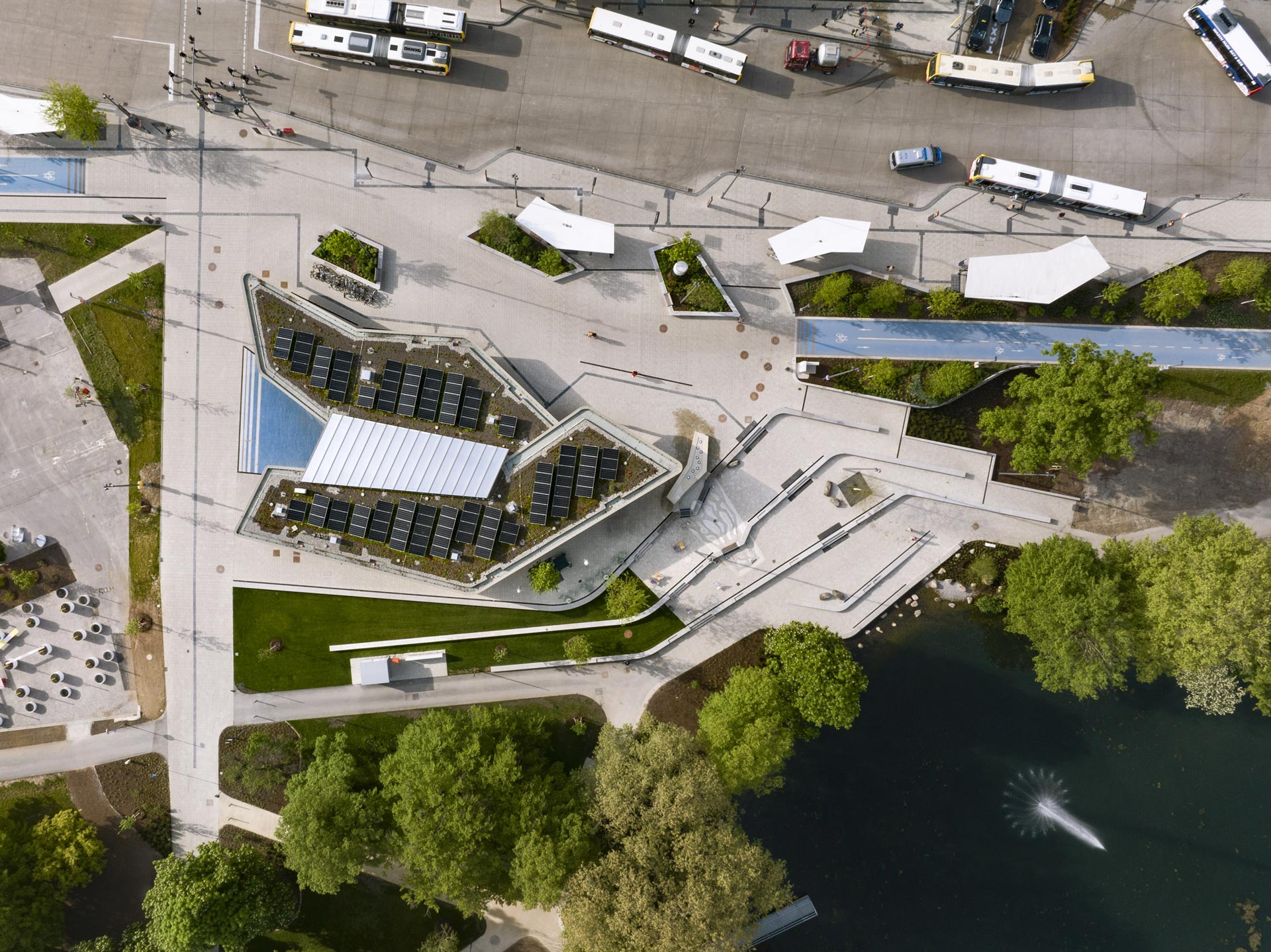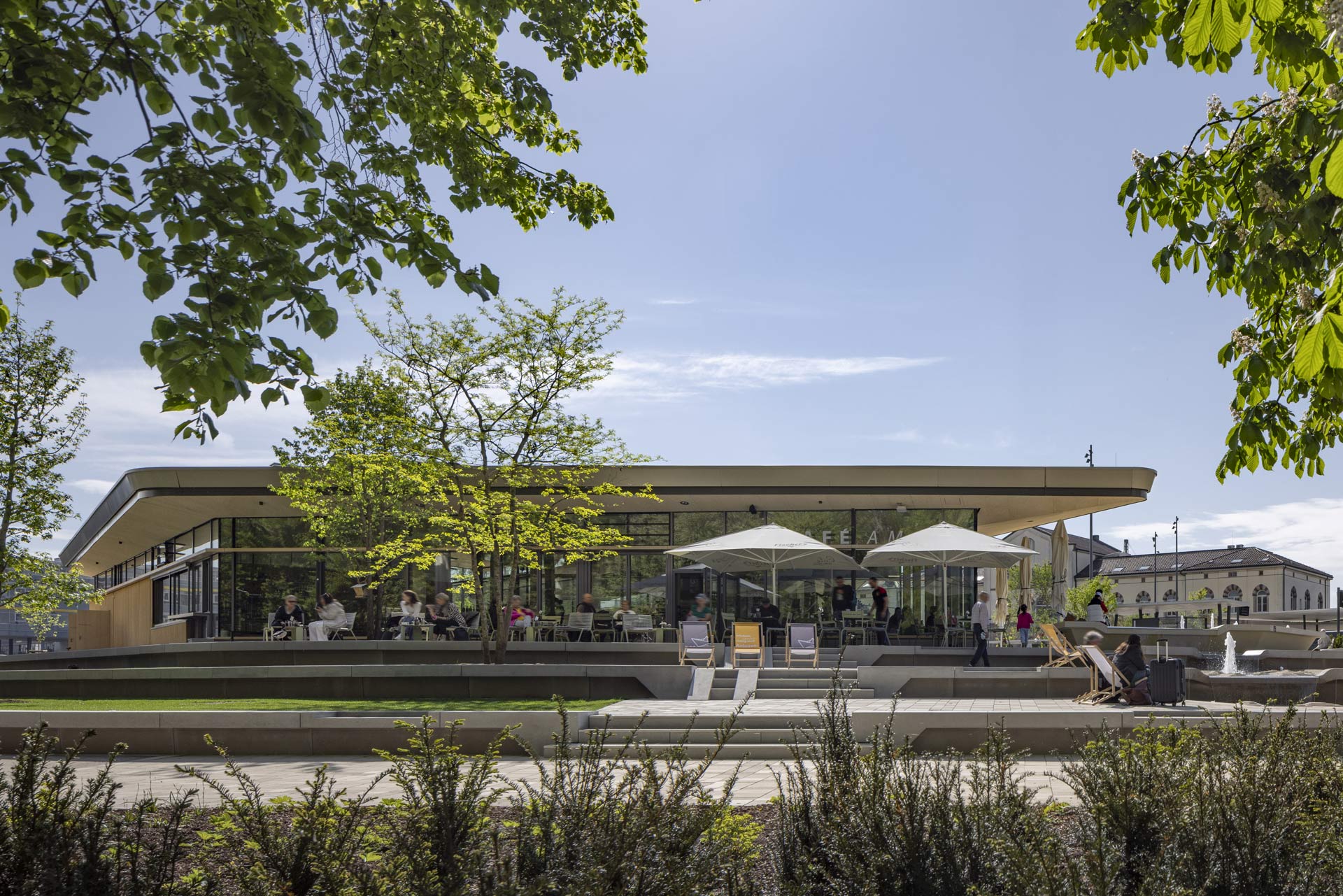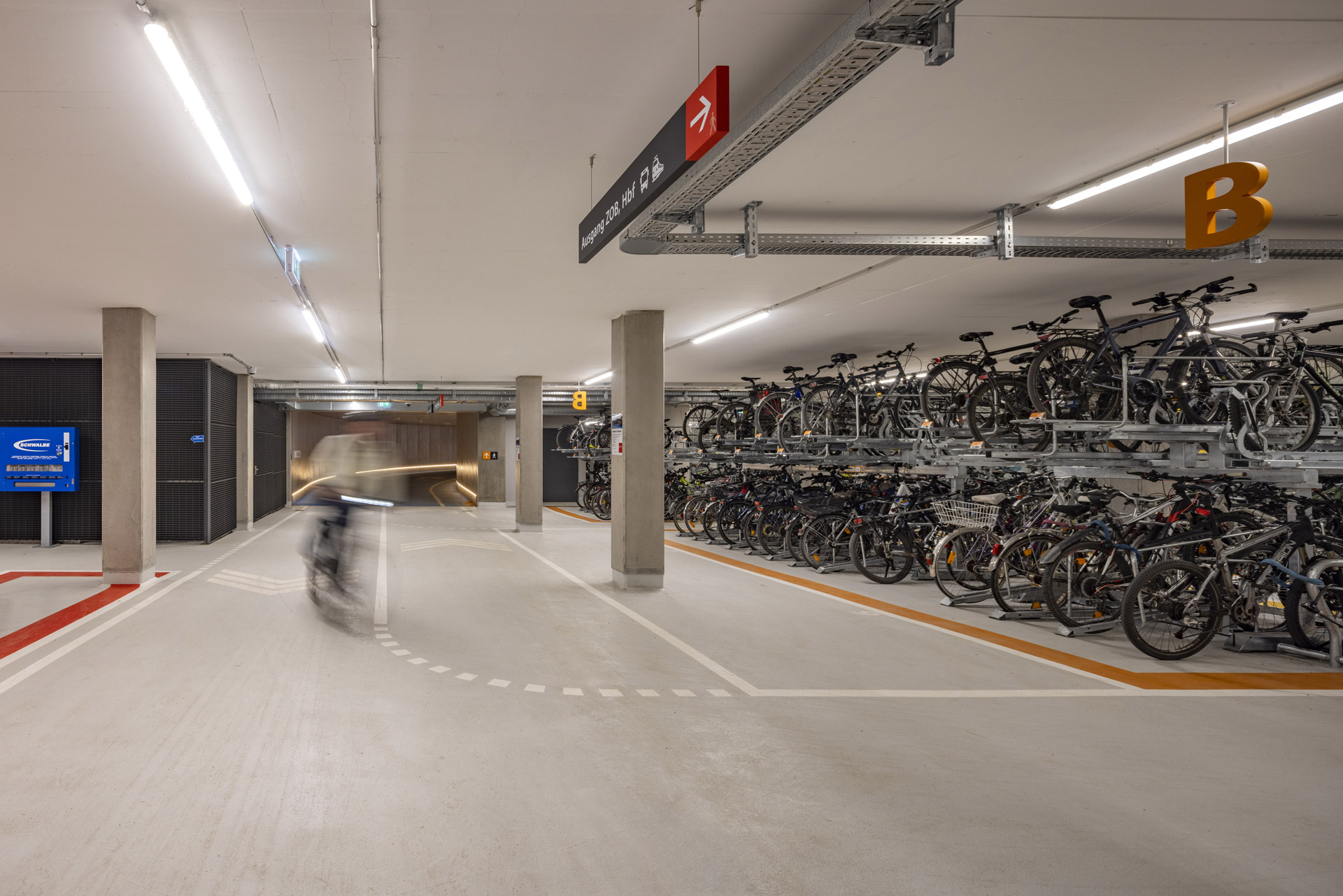Station de Vélo, Tübingen, Allemagne

Facing the main train station, the bike station is located between a lake, a park and a bus station. It includes a gastronomy pavilion with a terrace, a workshop and a rental station for “pedelecs”, low-powered electric bicycles, as well as public toilets, including a "toilet for everyone". Underground, the structure offers space for 1,100 bicycles, accessible via a generous ramp.
A high level of user comfort was ensured for all common areas, primarily through passive measures. The façade concept was optimized for summer and winter comfort as well as good daylight availability in the usage areas.
The restaurant and kitchen areas are mechanically ventilated. The dining area can be opened to the outside in summer and on warm days. Decentralized compact ventilation units supply the restroom areas. The bike workshop is naturally ventilated.
Heating is provided by the activated floor slab. The consistent design for low flow temperatures in heating mode leads to high energy efficiency and allows the integration of regenerative heat generation. Dynamic simulations were used to demonstrate thermal comfort in the main usage zones. With the holistic planning approach for the building, the team pursued the lowest possible CO2 footprint as a goal.
The above-ground structure is largely made of wood, which also largely reduces the embodied energy of the building construction. The technical equipment is a simple and robust system to keep maintenance requirements, CO2 emissions and follow-up costs low. The optimization of the mechanical and natural ventilation reduces the need for electricity for ventilation, while the passive measures ensure very good indoor comfort.
The energy supply from municipal district heating combined with the electricity generated by the large photovoltaic system on the roof enable climate-positive building operation on an annual balance sheet. Solar power covers a large proportion of the kitchen's electricity needs.
The bike station is a sustainable building with a minimized CO2 footprint and its own energy generation, which strengthens local values.


